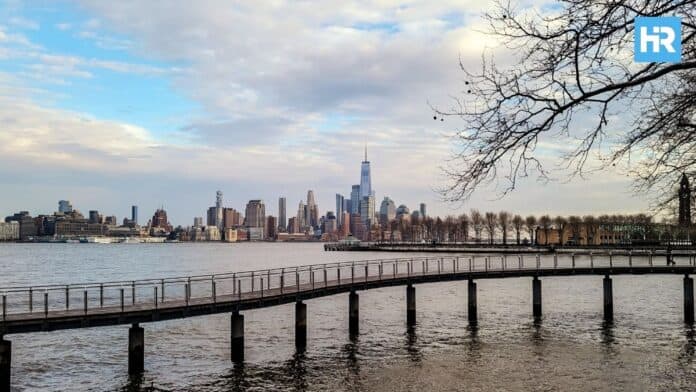Hoboken is creating a ‘living shoreline’ at Weehawken Cove to improve the waterfront with nature-friendly upgrades, better water quality, and storm protection.
Learn more about these exciting plans and how you can get involved.
- Hoboken is planning a ‘living shoreline’ at Weehawken Cove to boost the environment and water quality.
- The project includes making a tidal pool, reshaping the sand beach, and adding new plants to support local wildlife.
- Construction starts next year, with community input and help from Stevens Institute of Technology students.
Upgrades Planned for Weehawken Cove
Mayor Ravi Bhalla has shared new plans to upgrade Hoboken’s waterfront at Weehawken Cove. This is the third phase of the cove restoration project.
Following the removal of 14 abandoned boats in 2022, the city is set to enhance the scenery, recreational amenities, and natural environment along the Hudson River Waterfront Walkway between Park Avenue and 16th Street.
The planned improvements include:
- Re-grading the Sand Beach: This will improve water access for various water activities.
- Installing a 7,000-square-foot Tidal Pool: This ecologically rich pool will consist of shallow waters, mudflats, and salt marshes, creating diverse habitats for wildlife.
- Adding Plants and Natural Elements: New plants will restore natural habitats for local plants and marine life.
Benefits of the ‘Living Shoreline’ at Weehawken Cove
This part of the project will create a protected shoreline using natural materials like plants, sand, and rocks. This ‘living shoreline’ has many benefits:
- It helps prevent the shoreline from wearing away
- It makes the water in the Hudson River cleaner
- It helps store carbon emissions
- It cleans the local environment by capturing harmful substances
- It brings in new wildlife and boosts biodiversity
Weehawken Cove Project: What to Expect
Construction on the living shoreline, funded by the Hudson County Open Space Trust Fund, is scheduled to begin next year. The project will feature a tidal pool with microhabitats supporting wildlife and biodiversity.
Native plants like smooth cordgrass and saltmeadow cordgrass will stabilize the soil and reduce erosion.
Invertebrates such as fiddler crabs and ribbed mussels will enhance the ecosystem by promoting nutrient cycling and water filtration.
The city will collaborate with Stevens Institute of Technology students and staff for planning and implementation.
They will monitor the ecological impacts before, during, and after construction. Additionally, residents are encouraged to email [email protected] with feedback on the project.
Based on public feedback, the city will refine the design and aim to award a construction contract in the summer of 2025.
Boosting Hoboken’s Waterfront with Weehawken Cove Restoration
The Weehawken Cove Restoration project builds on previous efforts to improve Hoboken’s Waterfront.
Last year, Hoboken and the NJ Department of Environmental Protection started work on Harborside Park as part of the Rebuild by Design project.
Harborside Park, next to Weehawken Cove, will have open-air amenities like a dog run and amphitheater, as well as flood protection during storms like Superstorm Sandy.
By upgrading the waterfront with these plans, Hoboken continues to make its environment and recreational areas better, ensuring a great future for both residents and wildlife.






